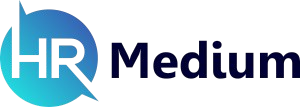A change is taking place. A shift in the development and implementation of HR tech solutions and services. The process of change used to be top-down, under the influence of organizations and supplier needs, it is now reforming bottom-up.
The needs of organizations are increasingly aligned with the needs of the human resources department. HR, in turn, is paying more and more attention to the needs of future and current employees due to the war on talent, the digitization of the workforce, and the increase in commitment in favor of retention.
A Little History
In the late 1990s, ERPHR functionalities (& HCM) started to develop. As a result of the first Millennials entering the labor market and the War on Talent, more functionalities focused on HR processes were developed, i.e. applicant tracking, performance management, and learning management systems.
These systems were not necessarily part of the original ERP, but they were compatible and could easily be implemented into the ERP or become part of a whole new HCM system to complete the Human Resource Management System (HRMS) which can be viewed as an ERP with Focus on HR. The main goal of these functions and systems is to support human resources management, nothing more and nothing less.
In 2014, the HR cloud also became mobile, and what is known as disruption occurred. The influence of the millennial generation entering the workforce shifted the focus from performance management to people management, and numerous HR tech vendors developed easy-to-use, standalone, cloud-based solutions to support very specific or rapidly evolving HR problems. It also became easy to provide an interface on a mobile device, creating an almost customized experience.
In addition, there are many tools and apps that can help you attract, develop, and retain employees that are compatible with all types of systems for monitoring or connection with the HRMS or as standalone tools.
Future of HR Technology
The future of HR technology is dependent on the technology that organizations adopt and adapt. Here are two technologies.
Gamification
Gamification is used to encourage candidates to leave their CVs or to facilitate the onboarding process. Learning and development could also benefit from this feature as it can be used to increase participation or learn from serious educational games.
Performance management will become familiar with the use of badges and HR analytics can benefit from the visual aspects.
Virtual Reality
Virtual reality will be the new normal to provide candidates with a vivid experience and a 360-degree view of the company and/or job. In learning and development, it can be used to teach in the workplace and practice instant learning. It could also contribute to the well-being and provide a short escape for employees working in a stressful environment.
Wrap Up
The advancement of technology is unstoppable in nature. For any organization to advance and take a step to the next level, technological adoption is mandatory. HR technology helps organizations to find the best candidates that can further the company ideals and produce better results.


